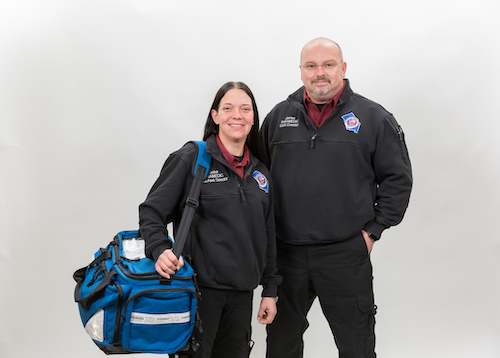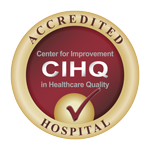
Picture of a female and male EMS employees smiling.
Jackson County Hospital District Emergency Medical Service
The Jackson County Hospital District Emergency Medical Service (JCHD EMS) operates 3 Mobile Intensive Care Units (MICU) ambulances to serve the citizens of Jackson County. Working with other responders in the district, the JCHD EMS mission is to provide professional, state-of-the-art pre-hospital care with an emphasis on customer service.
General Information
Jackson County Hospital District EMS began service on August 24th, 2011. Our Ambulances are available 24 hours a day for 911 emergency calls and mutual aid responses, as well as non-emergency ambulance transportation.Staffing:
The JCHD EMS currently has 20 staff members (Including 14 full-time medics with over 165 years of cumulative EMS service):- 2 EMT-Basics
- 3 EMT-Intermediates
- 15 EMT-Paramedics or Licensed Paramedics
EMS FAQ's
If I call the ambulance, what hospital will they take me to?JCHD EMS respects the rights of our patients to make decisions about what facility they will be transported to. We are able to transport patients directly to one of several area hospitals. Sometimes the severity of illness or injury may indicate a need for a higher level of care not available at all area hospitals.
Why are my medication pill bottles gathered and taken to the hospital?
Many patients do not have a current list of their medications available. Gathering the pill bottles provides guidance to the hospital on what kind of medical problems that the patient may have, and ensures that the patient is not given a medication that may react to current prescriptions. It is also important for the bottles to accompany the patient so that the emergency room staff has them at their immediate availability.
Why don't the paramedics just pick up the patient and rush them to the hospital?
JCHD EMS personnel are well trained and follow medical protocols which are in concurrence with recognized EMS procedures and guidelines of the American Heart Association. Patients sometimes require needed lifesaving medicines and skills which will help stabilize them before they are moved. In a very real sense, EMS brings the emergency room to the patient - and the initial treatment and stabilization our paramedics provide at the scene can be critically important.



